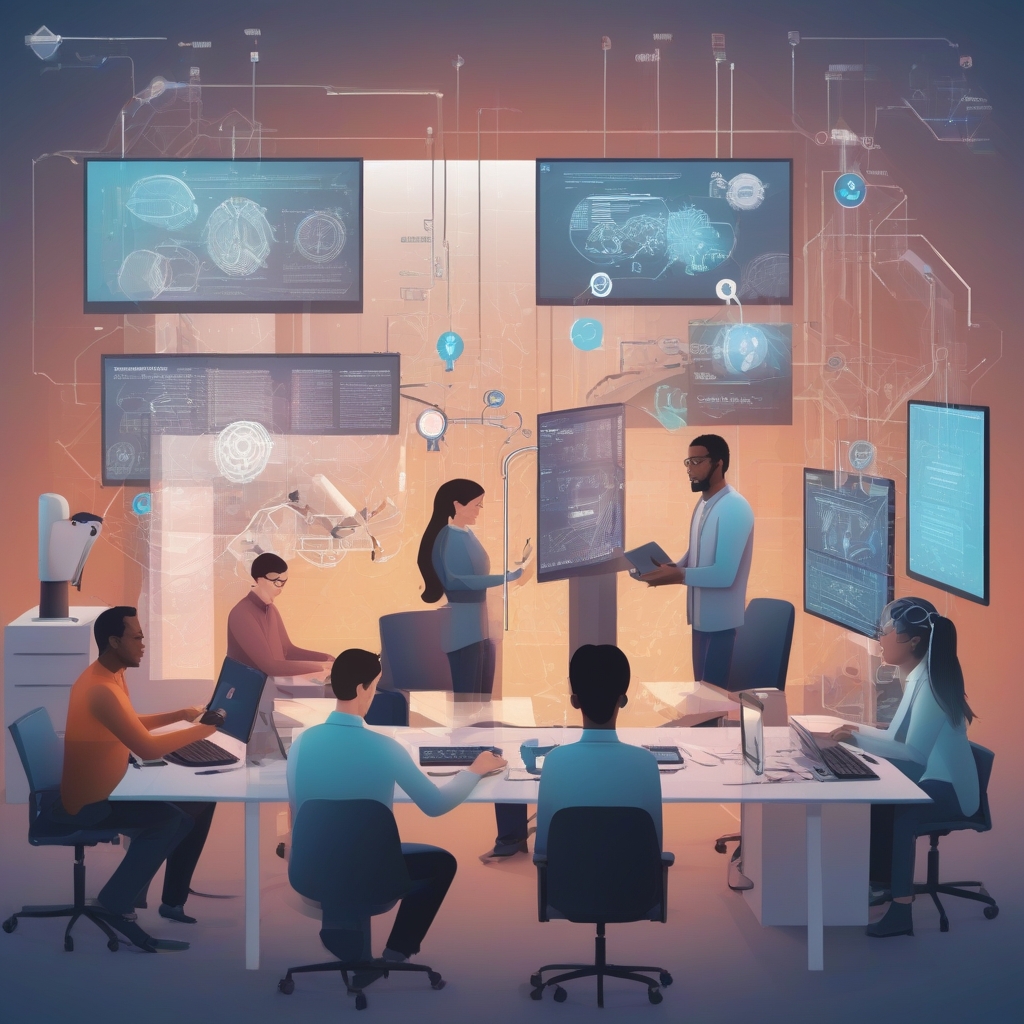Introduction
In the ever-evolving landscape of technology, software testing is a crucial component ensuring the quality and performance of applications. While artificial intelligence (AI) has stirred various industries with its transformative capabilities, its role in software testing is not about upending traditional methods but rather enhancing and refining them. The harmonious blend of human expertise and AI-driven tools is paving the way for more efficient and robust testing processes.
The Role of AI in Software Testing
Software testing is inherently complex and time-consuming. Over the years, manual testing, though effective, has become increasingly inadequate to meet the demands of agile and DevOps-driven environments. Here, AI steps in, augmenting the testing process with several key benefits:
1. **Speed and Efficiency**
AI algorithms can quickly analyze large volumes of code, identify patterns, and detect anomalies much faster than human testers. This acceleration in testing processes not only saves time but also allows development teams to meet tight deadlines without compromising quality.
2. **Enhanced Accuracy**
While human testers may overlook errors due to fatigue or oversight, AI tools consistently deliver precise and accurate results. By leveraging machine learning algorithms, AI can adapt and improve over time, ensuring that the margin of error is significantly reduced.
3. **Predictive Analytics**
With the ability to predict potential future issues based on historical data, AI provides valuable insights during the testing phase. Predictive analytics enable the identification and resolution of defects before they manifest into significant problems, ultimately enhancing the product’s reliability and performance.
Complementing Human Expertise
While AI brings numerous capabilities to the table, it is not a replacement for human testers. Instead, it acts as a powerful assistant, augmenting their abilities. Here’s how human intelligence and AI work together to improve software testing:
1. **Human Judgment and Creativity**
Despite AI’s prowess in handling repetitive and data-intensive tasks, it lacks the nuanced understanding of human context and creativity. Testers employ their judgment to design test cases, develop scenarios and interpret results in ways that AI cannot. This collaborative approach ensures that testing processes are comprehensive and innovative.
2. **Handling Edge Cases**
AI may struggle with unusual or unique edge cases that are not part of its training data. Human testers possess the intuition to recognize and address these cases, ensuring that the software performs well in real-world scenarios.
3. **Ethical Considerations**
Human oversight is critical in addressing ethical concerns related to AI-driven processes. This includes ensuring data privacy, algorithm fairness, and unbiased outcomes in testing scenarios. This human element maintains the integrity and ethical standards of testing operations.
AI Tools Transforming Software Testing
Several AI-driven tools are revolutionizing the software testing landscape by improving efficiency and accuracy. Here are some noteworthy tools:
- Selenium: Leveraging AI, Selenium automates web browsers to mimic real user actions, making it a popular choice for UI testing.
- Appium: Known for mobile testing, Appium uses AI to facilitate seamless and efficient test automation across various platforms.
- Testim.io: It utilizes machine learning to improve test stability and reduce test maintenance bottlenecks.
- Functionize: A cloud-based testing platform that uses AI to automate the maintenance of test cases and adapt to changes in the application.
Challenges and Considerations
While the integration of AI into software testing presents numerous advantages, it is not without its challenges:
1. **Implementation Complexity**
Incorporating AI into existing testing frameworks can be complex. It requires the integration of advanced algorithms, tools, and platforms that can effectively interact with the current testing environment.
2. **Skill Gap**
There is a growing demand for testers skilled in both traditional testing methodologies and AI technologies. Bridging this skill gap involves providing training and resources for testers to understand and leverage AI-driven tools effectively.
3. **Continuous Monitoring and Updating**
AI models require continuous monitoring and updating to ensure they remain relevant with evolving software needs. This involves regularly assessing the models’ performance and making necessary adjustments to maintain their efficacy.
Conclusion
AI in software testing is not about replacing human effort but enhancing it. By streamlining processes and increasing accuracy, AI-driven tools offer a compelling advantage to software testing teams. The synergy between human intelligence and AI technology creates a testing environment that is not only more efficient and effective but also capable of producing high-quality software products. As technology continues to evolve, embracing this partnership will be essential for organizations aiming to stay competitive in an increasingly digital world.

Leave a Reply